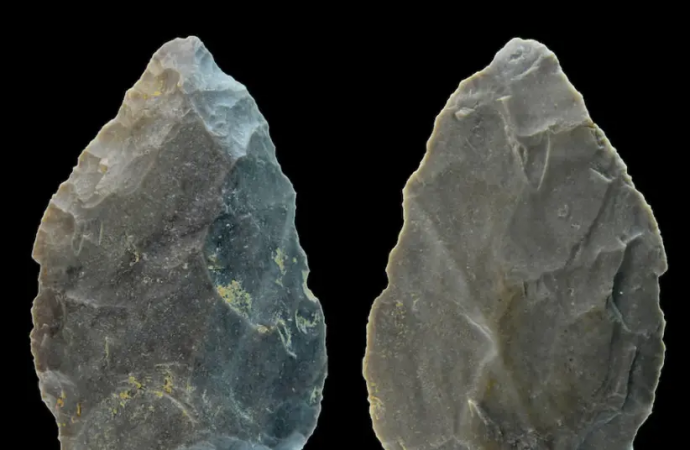This is the first time a leaf point has been found in a modern excavation, as the last was uncovered in 1936.
Source: The Jerusalem Post
A team from the University of Tübingen and the Senckenberg Centre for Human Evolution and Paleoenvironment found a 65,000-year-old Neanderthal leaf point at Hohle Fels Cave in southern Germany, a press release announced on Sunday.
This is the first time a leaf point, the tip of a Neanderthal hunting spear, has been discovered in the region since 1936, according to the announcement. It is also the older than any other leaf point discovered until now. Most were between 45,000 and 55,000 years old.”
The new results demonstrate that our assumptions about the dating of the cultural groups of the late Neanderthals were wrong and need revision,” Professor Nicholas Conard from the University of Tübingen said.
Neanderthals started roaming most of western Europe 400,000 years ago and the began to fade away about 40,000 years ago. The leaf point will give researchers new information about how these people hunted.
The tip of the leaf point was mounted to a wooden shaft used as a spear for hunting animals, according to the release. Researchers believe that it was damaged during a sharpening process and therefore discarded.
These spears were difficult to throw so hunters would thrust them into prey. Neanderthals used plant-based glue and bindings from plant fibers, sinew or leather to tie the tip to the spear.
“Neanderthals were expert stone knappers and knew exactly how to make and use complex technologies combining multiple parts and materials to produce and maintain deadly weapons,” Dr. Veerle Rots from the University of Liege in Belgium said.
The leaf points are currently on the Museum of Prehistory in Blaubeuren and will be on display until January 2022 at the “Find of the Year” exhibit.
Source: The Jerusalem Post

































Leave a Comment
You must be logged in to post a comment.